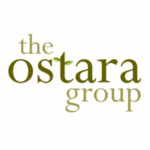The end (of the fiscal year) is nigh; Giving Tuesday is upon us. Well, not quite. You still have some time to make a great plan for the nationwide giving bonanza that will take place on Tuesday, November 28. Planning a successful giving day isn’t rocket science – but it is a microcosm of many classic principles of fundraising, from online giving to events to capital campaigns.
You probably already know all the reasons why you should invest in digital ads on social media platforms, pre-schedule your tweets, and solicit and leverage a matching gift for Giving Tuesday. But there are other strategies you can use to elevate your campaign, raise more money, build solid relationships with your donors, and reap the benefits of this giving day beyond this fiscal year. This year, make sure you:
- Define and focus on a specific funding need.
Giving Tuesday alone is not a reason for someone to give – it’s an opportunity. You still need to give your donors a compelling reason to act on the intrinsic motivation that makes them care about your mission in the first place.
It’s critical that you do not rely on “gap messaging” that focuses on filling the hole in your budget as the end of the calendar or fiscal year approaches. The gap in your budget has nothing to do with the donor, and it’s not the donor’s problem to solve. Your job is to show them the big problem your organization exists to solve, and communicate how something specific you do is an opportunity for the donor to help solve that problem in a specific and tangible way.
Any call to action to donors should be able to answer the following questions in the donor’s mind: “Why me? Why this? Why now?” The urgency piece is the hardest to get right. Sure, the fact that it’s Giving Tuesday helps, but that it doesn’t help you stand out from the crowd of other nonprofits fundraising intensely that day.
Make sure the donors know when and why you need their money. Choose a specific activity or program with a communicable timeline, as well as an end point or milestone at which you can communicate success back to the donors who funded it. In doing so, you’re defining and demonstrating urgency in a way that will set you apart from all the general operations asks flying around on Giving Tuesday. And you’ll raise more money.
If you work around actually restricting the gifts by closing with an ask for the donor to give “to solve urgent problems like this” or “to support our efforts to change lives like this,” you can have your cake and eat it too.
- Set a public goal – and make it one you can crush.
How you set a public goal for Giving Tuesday matters for many reasons. First and foremost – yes, you do need to set a public goal. Having a public financial goal helps donors see where their gift fits into the solution to the problem you are asking them to help solve. People act when they think they can tip the scales. If they don’t know what your goal is, they can’t contextualize their own gift and decide if their actions can make a meaningful dent in it.
Even more critically, giving days are an incredible source of new donors for nonprofits of all types. This is a spectacular opportunity for you to gain ground on the difficult and expensive journey of donor acquisition and building your donor pipeline. How you respond to a donor’s first gift sets the tone for their relationship to your organization and the likelihood of retaining that donor in the future. Shared success is the foundation of relationship-building, and the best way to start a new relationship. And shared success is always relative to a goal.
If you set a goal you can outperform, you create a big shared win for you and your donors. That’s a great start to permanently hooking new donors on your cause. If you set an ambitious goal and either don’t make it or barely make it, you don’t get to claim that epic victory that first-time donors will feel great about. You and the donor are in this story together, and setting an achievable goal is the first step in creating that narrative and influencing how they end up feeling about their gift and your organization.
- Make your Giving Tuesday donors feel special with instant stewardship.
We’ve written about instant stewardship for GiveBIG before – both why you should do instant stewardship, and exactly how to pull off instant stewardship for development teams of all sizes. Great news: instant stewardship is just as applicable to Giving Tuesday as it is to GiveBIG.
To sum up: instant stewardship is a fast, easy, cheap way for any nonprofit in any mission space to overcome the short half-life of digital philanthropic engagement and increase your chances of retaining the new donors you will acquire on Giving Tuesday. Go back and read our previous posts for all the details, and get cracking!
- Create and deploy a simple toolkit for others to use to help you raise money on Giving Tuesday.
Fundraising is absolutely a team sport. Recent data from online giving platform GiveGab’s survey of their participants shows that, on average, a nonprofit with an “engaged” board raised $4,150 on their giving day, or roughly double those with a “slightly engaged” board, who raised $1,800. It really is worth it to invest in amplifying your campaign by building a strong team of evangelists who will give, share, and cheerlead.
Think about all the people and affinity groups who are already “on your team” in some way: staff, board members, volunteers, advisory council members, young leadership group members, and yes, your existing donors!
What do they all have in common? Well, they’re probably very busy people. As the fundraising professional, your job is to make it as easy as possible for them to help you raise money on Giving Tuesday. Leaving them to their own devices without support and tools is a surefire way to leave money on the table.
So – set them up to succeed with a simple, concise digital toolkit for Giving Tuesday. Provide them with messaging around the funding need and your goal; sample social media posts, hashtags and graphics; testimonial quotes’ and sample emails they can personalize and forward to their networks. Make sure that this communications content is story-oriented and impact-oriented.
About Ariel Glassman

Ariel is a Senior Consultant at the Ostara Group and has lived and breathed fundraising and nonprofit management for the past 15 years. She has helped organizations in the arts, education, social justice, youth leadership, and global health sculpt innovative fundraising programs, strengthen their internal capacity, connect deeply with their donors, and propel their work to new heights.
The Ostara Group is a member of Washington Nonprofits and a partner in our learning program. Together we make sure nonprofits have what they need to raise the money they need to achieve their mission.

